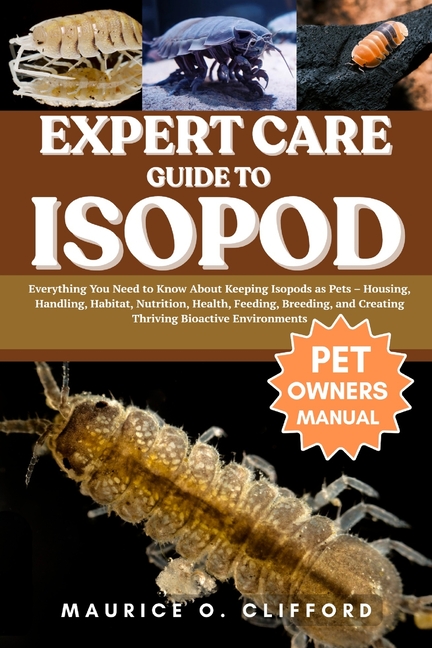Description
Isopods are becoming increasingly popular as pets among insect and invertebrate enthusiasts, hobbyists, and even those interested in bioactive terrariums. Also known as woodlice, pill bugs, or roly-polies (depending on the species), isopods are small crustaceans that are part of the suborder Oniscidea. These creatures have adapted to live on land and can be found under rocks, decaying logs, leaf litter, and in moist environments all over the world.
The Growing Appeal of Isopods
The recent surge in popularity of isopods as pets is due to several appealing traits. First and foremost, isopods are low-maintenance and cost-effective compared to traditional pets. They require minimal space, food, and equipment, making them ideal for people who live in small apartments or are new to pet keeping. Their fascinating appearances, ranging from the smooth and plain to the highly decorative like the Rubber Ducky or Panda King isopod, attract collectors and breeders alike.
Another reason for their popularity is their role in bioactive enclosures. Isopods act as nature's cleanup
crew, consuming organic waste, dead plant matter, and mold, which helps maintain a balanced micro-ecosystem. Because of this, they are often included in vivariums with reptiles, amphibians, or plants to help manage waste and maintain substrate health.
Unique Behaviors That Fascinate Owners
One of the most captivating aspects of keeping isopods is observing their behavior. Isopods are social creatures that often live in colonies and exhibit group behaviors. They can be seen foraging, grooming, hiding, and burrowing throughout the substrate. Some species are more reclusive and spend much of their time under logs or within leaf litter, while others are more active and readily visible.
Molting is another interesting behavior. Isopods shed their exoskeleton in two parts-first the back half, then the front-allowing owners to witness a process rarely seen in other pets. You may also notice their instinctual ability to roll into a ball as a defense mechanism, particularly in species like the Armadillidium, which is where the common name "pill bug" originates.
Breeding behaviors can also be observed in captivity. Isopods reproduce readily under the right conditions, with females carrying eggs in a special pouch called a marsupium. Watching young isopods (called mancae)
grow and develop adds to the satisfaction and depth of the hobby.
Basics of Isopod Care
Caring for isopods involves understanding and recreating their natural habitat. The most important requirement is maintaining adequate humidity. Isopods rely on moisture to breathe through their modified gills, so a damp but not saturated substrate is crucial. Coconut fiber, sphagnum moss, and leaf litter are common materials used in their enclosures to mimic forest floor conditions.
They thrive in small, enclosed containers with good ventilation and a secure lid. Enclosure sizes can vary, but a small plastic container or terrarium with a tight-fitting top and air holes usually suffices. They do not require artificial lighting, though they must be kept in a room with a stable temperature, usually between 20-26°C (68-78°F), depending on the species.
Isopods are detritivores, meaning they feed on decomposing plant material. A diet of decaying leaves, wood, vegetables like carrots or sweet potato, and calcium supplements such as cuttlebone ensures their health and encourages breeding. Clean water should always be available through misting or moisture in the substrate.
Product Details
- Jul 9, 2025 Pub Date:
- 9798291346754 ISBN-10:
- 9798291346754 ISBN-13:
- English Language




